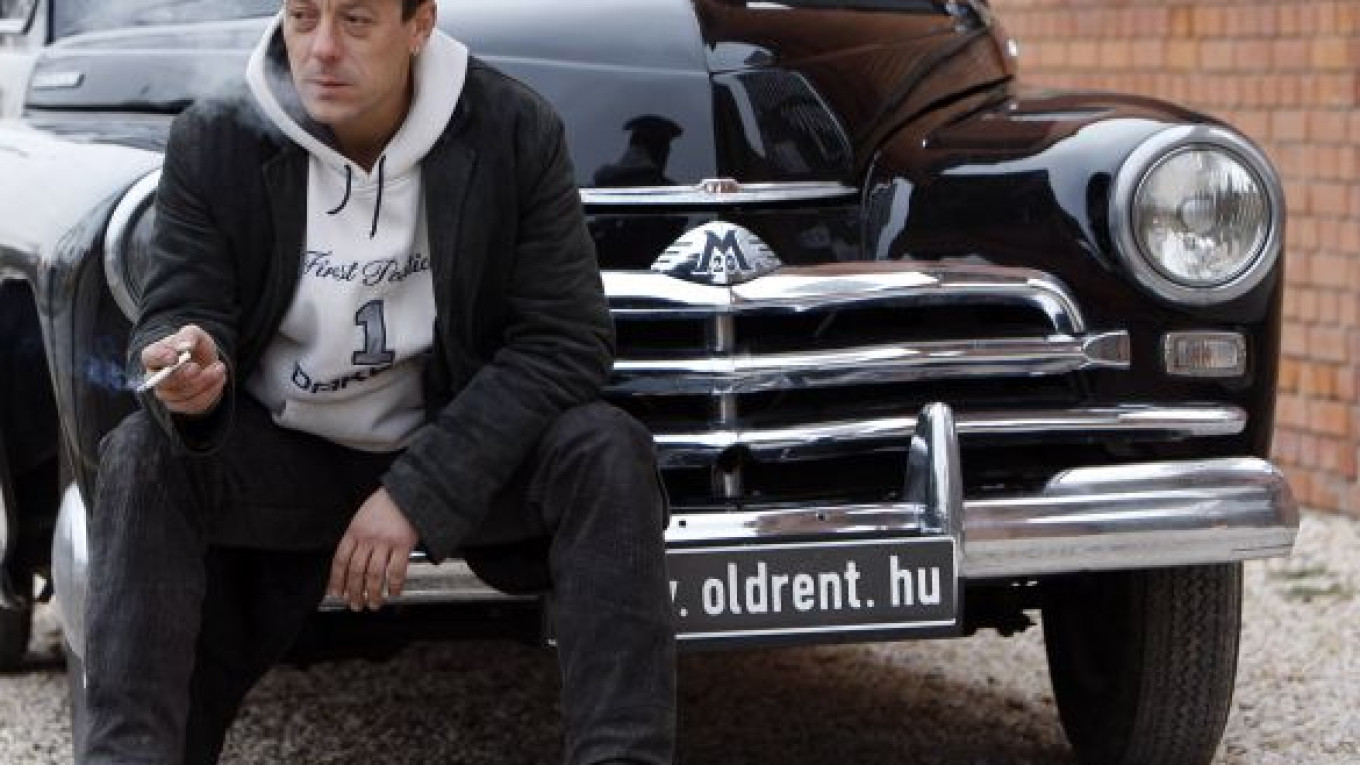BUDAPEST — Their spluttering engines, bone-rattling suspensions and outdated designs once ruled the streets behind the Iron Curtain.
But now the Trabant and its communist cousins have become rare cars for collectors. Soviet-made Ladas, the classic rear-engine Czech Skodas, Romanian Dacias, Polish Fiats, or the most famous of them all — East German Trabants — are now few and far between.
“Production stopped almost immediately once the [Berlin] Wall fell,” said Gabor Muczan, president of the Trabant Club in Hungary. “That means the newest of these cars are 20 years old, a venerable age even for a good-quality Western model.
“There are no real, simple users left. Collectors snap up the few usable vehicles for astonishing amounts of money.”
He said even his club’s members own few communist-era cars, whose annual maintenance can cost more than the purchase price.
Nostalgia has many car professionals and enthusiasts talk up the models of yore, even though most produced little more than 70 horsepower, broke down frequently and afforded few luxuries.
“They were not bad, those cars,” said Jeno Boros, editor of a recent book on old East European cars. “They were adapted to local conditions.”
With a few exceptions, the vehicles were licensed versions of Western brands, such as Fiats, Fords, and Renault models.
“The best, the worst and the best-selling cars were all Fiats,” Boros said. “The Zastava, made in Yugoslavia, was a modified Fiat 128, probably the best all-around model.
“The Polish Fiat 125, though, was so bad it was legendary. You tried to change the wheel, put it on a jack and the frame caved in.”
In 1970, the Soviet Union licensed the front engine, rear-wheel drive Fiat 124 to build the Lada, probably the most ubiquitous car in the eastern bloc. They would produce it for decades.
“The Lada was sturdy enough for Russian roads and weather,” Boros said. “With a few tweaks, it was ready for the steppe.”
As innovation was limited and competition nonexistent, cars could often stay in production, with barely any modification, for as long as 20 years.
Good or bad, the cars sold like candy because there were so few of them. In the planned economy, each country was assigned to produce a predetermined amount of goods, leaving most markets with far fewer cars than drivers.
Hungary did not make cars because it was assigned the bus and truck portfolio in the bloc. In exchange for every large vehicle exported, it could claim a certain number of cars. One Hungarian Ikarus bus was worth about 23 Ladas, said Agoston Kormendy, head engineer at the state import agency until 1989.
That market produced some peculiar economics. Would-be buyers had to sign up for a car years in advance.
“I signed up for a Lada once,” Kormendy said. “No privileges. They told me I’d get one in five years. I got it eight years later, at almost double the price.”
Shortages helped create the most famous of communist-era cars, the Trabant. First made in 1957, its cheap design and basic technology helped resuscitate the car industry in postwar East Germany, Kormendy said.
The two-stroke, two-cylinder engine was a concept from the 1930s, he said.
One of Trabant’s biggest fans now was barely 12 when communism fell.
Peter Lorincz, now 32, fell in love with his mother’s new Trabant in 1988, and went on to collect them.
His house, outside Budapest, has a yard full of scrap parts and a garage with seven Trabants: four limousines, two station wagons, and a convertible.
He brought the convertible out for a demonstration. It started without a hitch, and as Lorincz left the yard, a sticker on its tail heralded the Trabant’s one-time mass appeal. “People’s cars of the world!” it said. “Unite!”
A Message from The Moscow Times:
Dear readers,
We are facing unprecedented challenges. Russia's Prosecutor General's Office has designated The Moscow Times as an "undesirable" organization, criminalizing our work and putting our staff at risk of prosecution. This follows our earlier unjust labeling as a "foreign agent."
These actions are direct attempts to silence independent journalism in Russia. The authorities claim our work "discredits the decisions of the Russian leadership." We see things differently: we strive to provide accurate, unbiased reporting on Russia.
We, the journalists of The Moscow Times, refuse to be silenced. But to continue our work, we need your help.
Your support, no matter how small, makes a world of difference. If you can, please support us monthly starting from just $2. It's quick to set up, and every contribution makes a significant impact.
By supporting The Moscow Times, you're defending open, independent journalism in the face of repression. Thank you for standing with us.
Remind me later.


